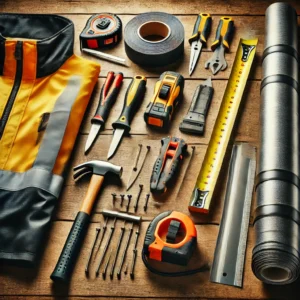
When it comes to roofing projects, the right tools can make all the difference, and the roofing hammer stands as an essential choice for both professionals and DIY enthusiasts. This specialized hammer combines a hatchet head and a hammerhead, making it ideal for driving nails into shingles and cutting them as needed. Understanding the unique features of a roofing hammer equips users with the knowledge to perform roof repair or installation tasks more efficiently.
The versatility of a roofing hammer lies in its design, which allows it to handle multiple functions that simplify the roofing process. This tool is not just about driving nails; it also possesses a curved blade that aids in lifting shingles and performing cuts when necessary. With the right technique, using a roofing hammer can significantly enhance workflow and precision on any roofing job.
Choosing the right roofing hammer can be a pivotal moment in a roofing project, influencing the overall outcome and productivity. Armed with the right information, individuals can select a hammer that best fits their needs, ensuring they are well-prepared for the tasks ahead.
Types of Roofing Hammers
Roofing hammers come in various types tailored to specific roofing tasks. Each type has unique features that enhance performance and usability, making them essential for professionals in the field.
Framing Hammers
Framing hammers are robust tools designed for heavy-duty applications. Typically, they feature a longer handle, providing additional leverage for striking nails.
The head of a framing hammer is generally heavier, usually weighing between 16 to 28 ounces. This added weight encourages a more powerful swing, allowing for easier driving of large framing nails into tough materials.
Many framing hammers include a milled face to grip nails securely, reducing the risk of slipping. The longer handle also allows for greater reach and control.
These hammers are suitable for various roofing tasks, particularly when constructing or repairing roof structures. Their versatility makes them a staple in both residential and commercial roofing projects.
Shingler’s Hammers
Shingler’s hammers are specialized for laying shingles and asphalt roofing. They typically feature a lighter head, making them easier to handle during repetitive tasks.
A shingler’s hammer usually has a claw designed specifically for removing shingles. This tool also often includes a built-in gauge for measuring exposure, ensuring a consistent installation of each row of shingles.
The handle is generally shorter than that of a framing hammer, allowing for increased precision while working. The lightweight design minimizes fatigue during extended use.
Shingler’s hammers are essential for roofing professionals, as they facilitate both the installation and removal of shingles effectively. Their design caters to the specific nuances of roofing tasks.
Hatchet Hammers
Hatchet hammers combine the features of both hammers and hatchets, aimed at providing versatility in roofing applications. Their unique design allows users to drive nails and cut shingles seamlessly.
These hammers often feature a sharp edge for cutting through roofing materials like shingles. The hammer side is typically smaller than that of a framing hammer, making it easier to maneuver in tight spaces.
Many hatchet hammers also have a curved claw for removing nails, further enhancing their functionality. Their compact size and dual-purpose design make them a practical choice for various roofing tasks.
Hatchet hammers are particularly beneficial for roofers who need both a cutting and driving tool readily available. Their multifunctionality saves time and improves efficiency on the job site.
Key Features and Benefits
The roofing hammer is a specialized tool that offers several distinct features. These characteristics enhance functionality and user experience, providing benefits that cater to both professionals and DIY enthusiasts.
Material and Durability
The material of a roofing hammer significantly affects its durability and performance. Most roofing hammers feature a head made of forged steel or drop-forged steel, known for their strength and longevity.
These materials resist wear and tear, ensuring the tool withstands harsh conditions. Additionally, many models come with a rust-resistant finish, adding to their lifespan. The handle is often made from fiberglass or steel, providing necessary toughness while minimizing breakage.
Weight and Balance
Weight and balance are crucial for effective tool performance. A roofing hammer typically weighs between 16 to 22 ounces. This weight offers sufficient heft for driving nails without causing fatigue during prolonged use.
An evenly balanced hammer allows for greater control and precision, reducing the risk of mis-hits. Users should pay attention to the hammer’s head-to-handle ratio, as an optimal balance contributes to better swinging mechanics.
Grip and Comfort
Grip and comfort are essential for usability. Many roofing hammers feature rubberized or textured grips, enhancing control and reducing slippage. This design helps prevent hand fatigue, especially during extended tasks like shingling.
Some hammers come with shock-absorbing handles that lessen the impact on the user’s hand. A comfortable grip allows roofing professionals to work efficiently without compromising safety.
Magnetic Nail Holder
The magnetic nail holder is a standout feature of many roofing hammers. This innovative addition allows for easy placement of nails, making one-handed use more feasible.
The magnet secures the nail in place, reducing the likelihood of dropping or misplacing it during installation. This feature streamlines the process, particularly for roofing tasks requiring high precision and efficiency.
Vaishno Devi Helicopter Ticket Price: A Comprehensive Guide for Pilgrims
Vaishno Devi is one of the most revered pilgrimage sites in India, attracting millions of …